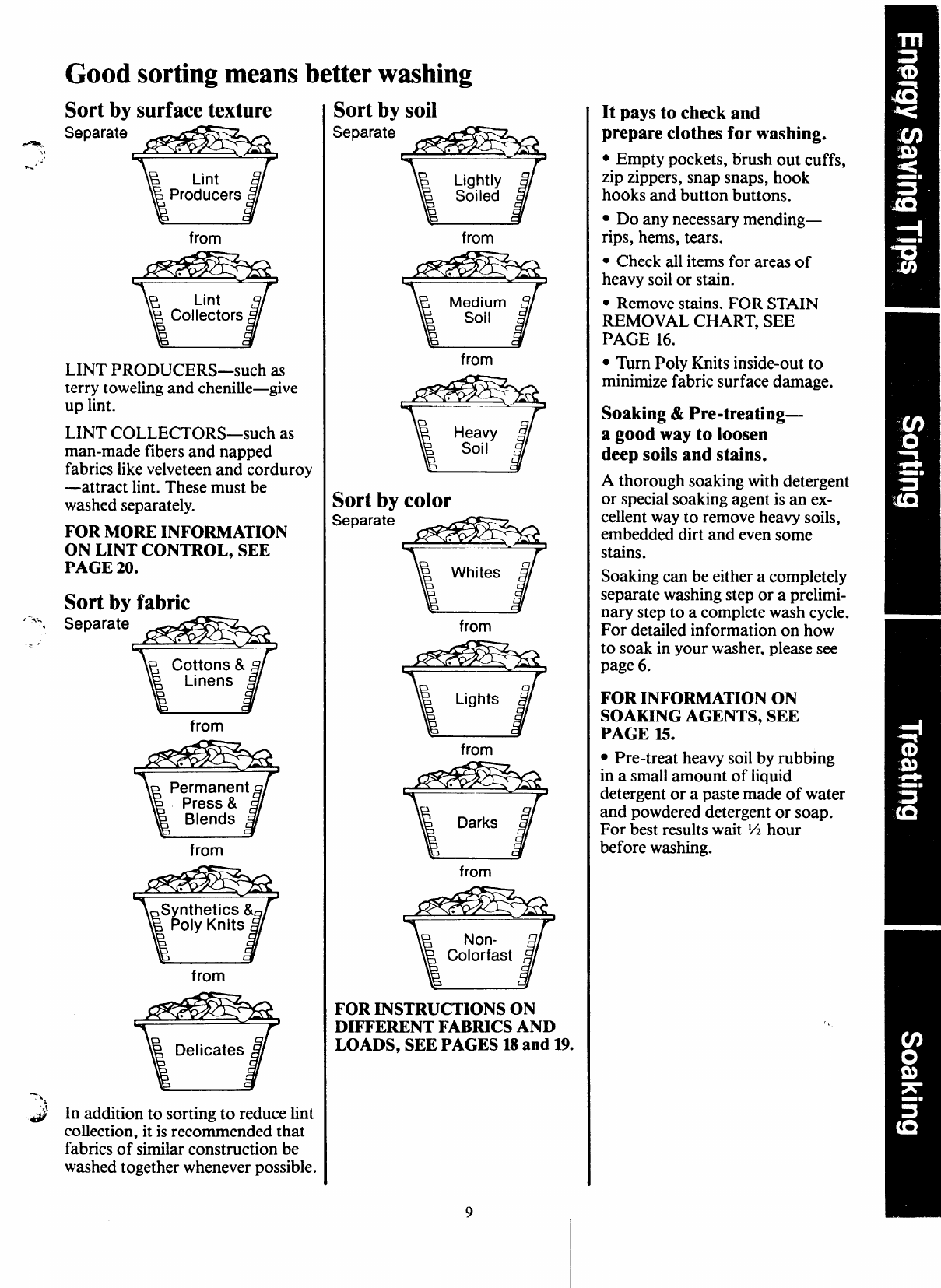
Good sorting means
Sort by surface texture
Separate
e..
\%
,,
%-’
from
\Colk4b~
LINT PRODUCERS—such as
terry toweling and chenille—give
up lint.
LINT COLLECTORS—such as
man-made fibers and napped
fabrics like velveteen and corduroy
—attract lint. These must be
washed separately.
FOR MORE INFORMATION
ON LINT CONTROL, SEE
PAGE 20.
Sort by fabric
.-..
from
●
Permanent
m
Press &
Blends
from
.
Synthetics &
13
Poly Knits
from
_ ~Delicates/
:$
& In addition to sorting to reduce lint
—
collection, it is reco&nended that
fabrics of similar construction be
washed together whenever possible.
better washing
Sort by soil
Separate
.
\3
Lightly
Soiled
from
from
Sort by color
Separate
from
from
from
FOR INSTRUCTIONS ON
DIFFERENT FABRICS AND
LOADS, SEE PAGES 18 and 19.
9
It pays to check and
prepare clothes for washing.
● Empty pockets, brush out cuffs,
zip zippers, snap snaps, hook
hooks and button buttons.
● Do any necessary mending—
rips, hems, tears.
s Check all items for areas of
heavy soil or stain.
● Remove stains. FOR STAIN
REMOVAL CHART, SEE
PAGE 16.
● Turn Poly Knits inside-out to
minimize fabric surface damage.
Soaking & Pre-treating—
a good way to loosen
deep soils and stains.
A thorough soaking with detergent
or special soaking agent is an ex-
cellent way to remove heavy soils,
embedded dirt and even some
stains.
Soaking can be either a completely
separate washing step or a prelimi-
nary step to a complete wash cycle.
For detailed information on how
to soak in your washer, please see
page 6.
FOR INFORMATION ON
SOAKING AGENTS, SEE
PAGE 15.
● Pre-treat heavy soil by rubbing
in a small amount of liquid
detergent or a paste made of water
and powdered detergent or soap.
For best results wait !ZZhour
before washing.


















